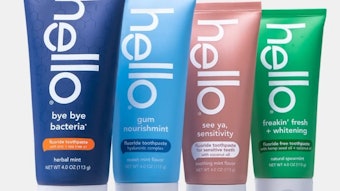Web Exclusive to Teeth-Whitening Feature, Up from the Dentist’s Chair.
Basic oral health care is a growing concern to dental hygienist and president of the ADHA, Diann Bomkamp, as she explains in this Q&A with GCI.
While interviewing members of the oral care industry for GCI magazine’s February 2009 teeth whitening feature, it became apparent—after speaking with one dental hygienist—that basic oral health care should be more top of mind to beauty brand owners and consumers than secondary specialty procedures alone. Diann Bomkamp, president of the American Dental Hygienists’ Association (ADHA), shared her thoughts on the matter.
GCI: Could you share some basic background information about the organization you represent, the ADHA?
Diann Bomkamp: The American Dental Hygienists’ Association is a professional organization that represents over 150,000 dental hygienists. ADHA is promoting the utilization of dental hygienists in offering preventive oral health services directly to the public, especially for patients who do not have easy access to care, like children, those with special health care needs.
GCI: In your opinion, how is the oral care industry changing?
Diann Bomkamp: Americans today pay a lot of attention to their looks. Whitening seems to be a relatively simple way to have a younger appearing smile, and is one of the most common esthetic dental treatments for adults. It is so popular that patients can choose to have it done in-office with dental supervision or at-home with either dentally prescribed products or over-the-counter products.
GCI: What advancements have been made in teeth whitening recently?
Diann Bomkamp: There are now products besides the traditional peroxides being used for whitening, such as the use of calcium and phosphate technology (amorphous calcium phosphate-ACP), which offers the potential for aesthetic and preventive benefits from toothpastes, polishing pastes and other products. ACP consists of an unstructured form of calcium phosphate molecules that help remineralize enamel. It also may offer cosmetic benefits by filling in tooth surface defects that make a dull and darker tooth look brighter.





![Burst founder Hamish Khayat says, 'The kids’ brush is a great example [of our product development philosophy]: the biggest problem with existing brushes was that brush heads aren’t curved at the end, so they can’t reach the rear molars. So, you curve the head and you solve that problem.' Pictured are variants of the BurstKids Sonic Toothbrush.](https://img.gcimagazine.com/files/base/allured/all/image/2022/05/BURSTkids_Sonic_Toothbrushes.6287fd790c577.png?auto=format%2Ccompress&fit=crop&h=191&q=70&w=340)




